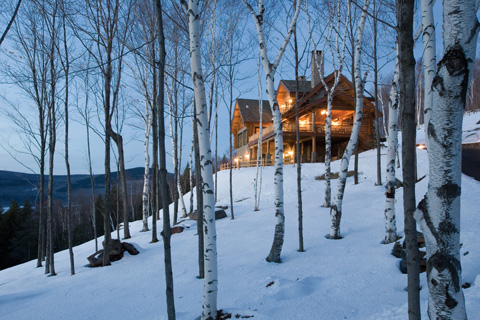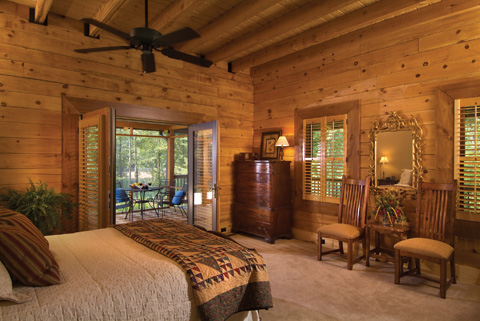The dismal news headlines from coast to coast indicate that the housing market has yet to fully recover from its bursting bubble and the subprime lending fiasco of several years ago. While it’s no secret that housing has taken a beating in the last few years, that doesn’t mean it’s impossible to find construction financing to pay for your dream log home.
“It is not harder to get a loan for a log home than it is for a conventionally constructed home,” says Troy Kennedy, home mortgage consultant and log and timber team leader for Wells Fargo.
Declining home values have made lending riskier, however, and the biggest hurdle for most prospective homeowners is scraping together funds for the down payment, Kennedy says. Until a few years ago, most lenders offered up to 100 percent financing. That’s not the case anymore. Because the construction process for a log home typically takes 12 months, it is possible in this unstable market that homeowners could end up owing more than the house is worth once construction is complete. For that reason, lenders are requiring more cash up front.

Kuhns Bros. Log Homes/ photo by Roger Wade
“A larger down payment can be a hindrance, but the good news is we can use land equity as a down payment,” Kennedy says. “If someone owns a lot worth $100,000 and their construction costs are $300,000, the total acquisition value is $400,000. They already have $100,000 in land equity, so no cash is needed at closing.”
Here are seven tips for finding construction financing:
1. Find a lender experienced in financing a log home. There are differences in financing the construction of a log home versus a conventional home—particularly with the “draw” schedule, or payments made to the log home producer, the builder, and the subcontractors. Many log home manufacturers, for example, require 50 percent upfront before starting the work and the balance upon delivery of materials to the job site. Your log home producer or builder often can recommend lenders they have worked with in the past.
2. Seek prequalification for the loan. You should obtain prequalification (or preapproval) before meeting with the log home company and designing your home. “Make sure your budget is in line with what your dreams are,” says Greg Ebersole, mortgage consultant for American Log Mortgage in Mountville, Pennsylvania. This process will determine how much house you can afford.
3. Improve your chances for getting a loan. Don’t switch employment to a different career field, which could affect your ability to qualify. Additionally, make sure you’re not racking up new debt while trying to qualify for a loan. That could have a negative impact on your debt-to-income ratio. “It’s not a good time to go out and buy the boat for the lake house,” Kennedy says. “Build the house and then get the toys. Just be financially responsible and consistent going into it, so there are no big surprises or changes at application time.”
4. Seek a construction-to-permanent loan. The most convenient and cost-effective way to finance construction is to use the one-time closing loan. The construction portion of the loan is temporary and automatically rolls into the mortgage at the end of the project. This type of loan requires just one application and one-time closing costs. “This type of loan makes everything less expensive and is an easier process,” Kennedy says.
5. Lock in historically low interest rates. “Construction loan interest rates are phenomenally low right now because prime is at its lowest,” Kennedy says. More and more lenders are offering a long-term rate lock, allowing borrowers to lock in their permanent loan rate a year in advance. Check with your lender to see if this is an option.
6. Keep appraisals in mind. Be sure your building site and home design are comparable to other homes in your neighborhood. “You can’t put a mansion in a trailer park,” says Andrew West, vice president and wealth management advisor for West and Gasparini Group, Merrill Lynch Financial Advisors. “You have to be able to prove there’s a market for what you’re doing. You have to show completed sales in the same price range of what you’re purchasing.”
7. Don’t let your dreams become bigger than your budget. Ask yourself: “Does this house fit the financial goals of the family?” West says. Make sure you plan wisely so that you don’t compromise your retirement goals or helping your children finance college. “Just be sensible and realize that this last decade was kind of drunk on its own housing bubble,” West adds. “Building these huge homes just because you want to is great if you’ve got a barrel full of cash, but if you’re going to borrow it, it needs to fit the market as much as it fits your own balance sheet.”


